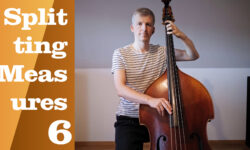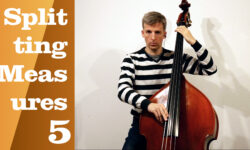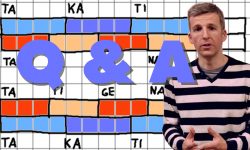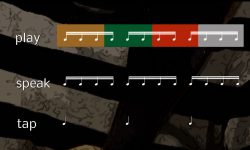Splitting Measures (6) – Splits in 5/4

A 5/4 time signature is fun to play! Songs like Sting’s “Seven Days” or the “Mission Impossible Theme” are in 5/4. In this lesson, you learn rhythms on the 8th note as well as on the 16th note subdivision level. Contents: 0:00 Odd time 0:25 Subdivisions in 5/4 1:29 Exercise 19: Symmetric splits: 55, 44444, 5555 3:42 “sort of” symmetric splits 4:20 Exercise 20: “sort of symmetric splits: 55, 3232, 2323 5:47 Asymmetrical splits 6:33 Exercise 21: Asymmetrical splits: 3322, 3322 3322, 33332222, 6662 8:23 Final thoughts topics: rhythm, konnakol, polyrhythms, odd meter Level: beginner Instruments: for all instruments Duration:…








